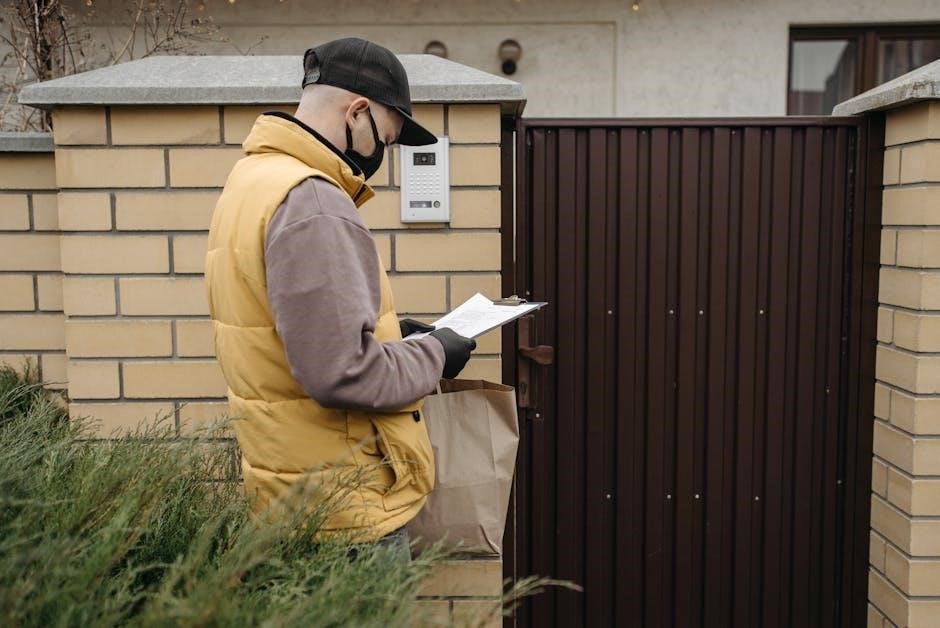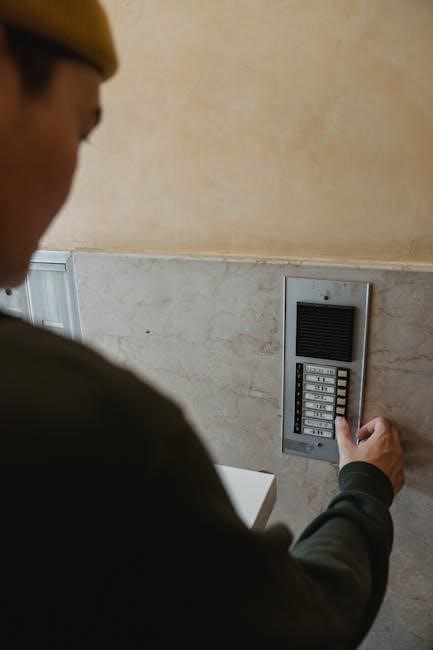look-alike sound-alike drugs list 2023 pdf
Look-alike, sound-alike (LASA) drugs are medications with similar names or appearances, leading to potential mix-ups. The 2023 LASA Drug List highlights such high-risk medications. The FDA and ISMP regularly update these lists to minimize confusion and enhance patient safety. Understanding LASA drugs is crucial for preventing adverse events.
1.1 Definition and Overview of LASA Drugs
Look-alike, sound-alike (LASA) drugs are medications with similar names or packaging, leading to potential mix-ups. These drugs pose risks due to confusion during prescribing, dispensing, or administration. The 2023 LASA Drug List identifies such high-risk medications, emphasizing the need for vigilance. Regulatory bodies like the FDA and ISMP monitor LASA drugs to reduce errors and enhance patient safety through awareness and best practices.
1.2 Importance of Addressing LASA Drug Confusion
Addressing LASA drug confusion is critical to prevent medication errors, which can lead to serious patient harm or even death. The 2023 LASA Drug List underscores the need for healthcare providers to implement safety measures. By reducing LASA-related errors, healthcare systems can improve patient outcomes, reduce legal liabilities, and enhance overall quality of care. Proactive strategies are essential to mitigate these risks effectively.

Background and Prevalence of LASA Drug Errors
LASA drug errors are a global issue, with studies in Thailand and India highlighting their prevalence; The FDA and ISMP lists emphasize the need for vigilance in medication practices.
2.1 Historical Context of LASA Drug Issues
LASA drug confusion has been a longstanding issue in healthcare, with historical reports of medication errors due to similar drug names. The FDA and ISMP have long addressed this problem, updating lists to reduce risks. Globally, LASA drugs gained recognition as a patient safety concern, with regions like Thailand and India highlighting their prevalence and impact on healthcare systems over the years.
2.2 Global Incidence of LASA-Related Medication Errors
LASA-related medication errors are a global concern, affecting healthcare systems worldwide. In Thailand, studies have highlighted the similarity in drug names, while India faces challenges with lax drug regulation and prescription practices. These issues underscore the need for international collaboration to address LASA drug errors and improve patient safety across diverse healthcare settings.
Key Characteristics of LASA Drugs
LASA drugs share similar names, packaging, or appearances, leading to confusion. Their visual and auditory similarities increase the risk of medication errors, requiring careful differentiation.
3.1 Similarities in Drug Names
LASA drugs often have names that are phonetically or visually alike, causing confusion. The 2023 LASA Drug List identifies such medications, emphasizing the need for clear differentiation. Similar-sounding names can lead to prescribing or dispensing errors, especially in fast-paced healthcare environments. Tall Man Letters are used to highlight distinguishing parts of drug names, reducing mix-ups and enhancing safety.
3.2 Visual Similarities in Packaging and Appearance
LASA drugs often share similar packaging and visual features, increasing the risk of mix-ups. The 2023 LASA Drug List highlights medications with comparable designs, such as color schemes, fonts, and label layouts. These visual overlaps can lead to errors in dispensing or administration. Enhanced packaging differentiation and barcode scanning systems are recommended to mitigate such risks and improve medication safety.

The 2023 LASA Drug List
The 2023 LASA Drug List identifies medications with similar names or appearances, updated by the FDA and ISMP to reduce confusion and minimize medication errors.
4.1 Overview of the 2023 LASA Drug List
The 2023 LASA Drug List is an annually updated resource identifying medications with similar names or appearances. It highlights high-risk drugs prone to mix-ups, focusing on name similarities and visual confusion. The list, developed by regulatory bodies like the FDA and ISMP, aims to enhance patient safety by reducing errors in prescribing, dispensing, and administration of medications.
4.2 Key Drugs Included in the 2023 List
The 2023 LASA Drug List includes critical medications such as insulin glargine and insulin aspart, which are often confused due to similar names. Other notable drugs include hydrocodone and hyoscine, known for their sound-alike properties. The list also features drugs with visually similar packaging, such as atenolol and amiodarone, emphasizing the need for vigilance to prevent mix-ups.

Regulatory Efforts to Combat LASA Drug Errors
Regulatory bodies like the FDA and ISMP collaborate to identify and mitigate LASA drug risks. They publish updated lists and recommend safety measures, such as Tall Man Letters, to reduce errors.
5.1 FDA’s Role in Monitoring LASA Drugs
The FDA actively monitors LASA drugs to prevent medication errors. They publish updated lists of high-risk medications and recommend naming conventions, such as Tall Man Letters, to differentiate similar drug names. This regulatory oversight aims to enhance patient safety and reduce confusion among healthcare providers and patients.
5.2 ISMP’s Recommendations for LASA Drug Safety
The Institute for Safe Medication Practices (ISMP) provides critical recommendations to mitigate LASA drug errors. They emphasize the use of Tall Man Letters and regular staff training. ISMP also advocates for barcode scanning and electronic health records to enhance accuracy. Their guidelines are integral to improving medication safety and reducing adverse events in healthcare settings.

Patient Safety and LASA Drugs
Look-alike, sound-alike drugs pose significant risks to patient safety, often leading to medication errors. The FDA and ISMP emphasize the importance of vigilance and proper identification to prevent harm.
6.1 Impact of LASA Drugs on Patient Safety
Look-alike, sound-alike drugs significantly compromise patient safety by increasing the risk of medication errors, which can lead to adverse events, injuries, or even death. In Thailand and India, such errors are particularly prevalent due to name confusion, highlighting the urgent need for improved practices to protect patients and maintain trust in healthcare systems.
6.2 Strategies to Enhance Patient Safety
Enhancing patient safety involves implementing Tall Man lettering and barcode scanning to reduce LASA drug mix-ups. Regular staff training, improved labeling, and patient education are also critical. The FDA and ISMP recommend these strategies to minimize errors and ensure safe medication practices across healthcare settings.
Reducing LASA Drug Errors in Healthcare Settings
Implementing Tall Man letters and barcode scanning can significantly reduce LASA drug errors. Regular staff training and improved labeling are also essential strategies to enhance medication safety.
7.1 Best Practices for Healthcare Providers
Healthcare providers should verify medication names using the 2023 LASA Drug List and employ Tall Man letters for clarity. Double-checking prescriptions, using barcode scanning, and educating staff on high-risk LASA drugs are critical. Regular training and updated protocols ensure safer medication practices, reducing errors and improving patient outcomes.
7.2 Technological Solutions to Minimize Errors
Technological tools like automated dispensing systems and barcode scanning help reduce LASA drug errors. Integration of LASA drug alerts in pharmacy systems and electronic health records (EHRs) provides real-time warnings. Advanced medication verification software enhances accuracy, while artificial intelligence can predict potential mix-ups. These solutions, combined with the 2023 LASA Drug List, significantly improve medication safety and efficiency in healthcare settings.

The Role of Tall Man Letters in LASA Drug Safety
Tall Man Letters highlight distinct parts of drug names to reduce confusion. They are included in the 2023 LASA Drug List to enhance patient safety by minimizing errors.
8.1 What Are Tall Man Letters?
Tall Man Letters are a safety strategy where distinct parts of drug names are capitalized to differentiate similar-sounding medications. The FDA and ISMP recommend their use to reduce LASA drug confusion. These letters highlight key differences, aiding healthcare providers in identifying medications accurately. They are a critical component of the 2023 LASA Drug List, enhancing patient safety by minimizing mix-ups.
8.2 Effectiveness of Tall Man Letters in Reducing Errors
Studies demonstrate that Tall Man Letters significantly reduce LASA drug errors by improving name differentiation. The FDA and ISMP endorse this method, as highlighted in the 2023 LASA Drug List. By emphasizing distinct parts of drug names, Tall Man Letters enhance readability and minimize mix-ups, thereby improving patient safety and reducing adverse events in healthcare settings.

LASA Drug Errors in Specific Regions
LASA drug errors are prevalent in Thailand and India, as noted in the 2023 list, due to challenges like similar brand names and regulatory issues, significantly affecting patient safety.
9.1 LASA Drug Issues in Thailand
Thailand faces significant LASA drug challenges, with a study highlighting the similarity of brand names for tablets and capsules. The 2023 LASA Drug List underscores these risks, emphasizing the need for improved regulatory oversight. Factors like commercial availability and naming similarities exacerbate errors, prompting calls for enhanced monitoring and patient safety measures by healthcare authorities.
9.2 LASA Drug Challenges in India
India faces LASA drug challenges due to lax regulation and unclear prescriptions. The 2023 LASA Drug List highlights these risks, exacerbated by similar brand names. Poor regulatory enforcement and prescribing practices increase error likelihood. Strengthening oversight and raising awareness are critical to mitigating LASA-related medication errors in India’s healthcare system.
The Role of Healthcare Professionals in LASA Drug Management
Healthcare professionals play a vital role in managing LASA drugs by ensuring accurate prescriptions and dispensing. They must stay updated on the 2023 LASA Drug List and implement safety strategies to minimize errors.
10.1 Responsibilities of Pharmacists and Prescribers
Pharmacists and prescribers must ensure accurate medication dispensing and prescribing. They should verify drug names, use Tall Man letters, and stay updated on the 2023 LASA Drug List. Regular reviews of FDA and ISMP guidelines are essential to minimize errors. Effective communication and double-checking prescriptions are critical to patient safety.
10.2 Nursing Staff’s Role in Preventing LASA Errors
Nursing staff play a vital role in preventing LASA drug errors. They should always verify medication labels, use barcode scanning, and cross-check medications against the 2023 LASA Drug List. Nurses must also educate patients about their medications and report any potential mix-ups. Their vigilance ensures safe medication administration and protects patient safety.

Public Awareness and Education
Public awareness campaigns are essential to educate patients about LASA drugs. Community outreach programs and patient education materials, like the 2023 LASA Drug List, help reduce errors.
11.1 Educating Patients About LASA Drugs
Educating patients about LASA drugs involves providing clear information on the 2023 LASA Drug List and emphasizing name similarities. Patients should be encouraged to verify medications with healthcare providers, read labels carefully, and use tools like pill cards. Awareness campaigns and materials from the FDA and ISMP help empower patients to recognize and avoid potential mix-ups, enhancing their safety and understanding.
11.2 Community Outreach Programs
Community outreach programs play a vital role in raising awareness about LASA drugs. These initiatives often include workshops, distribution of educational materials, and collaborations with local organizations. By targeting vulnerable populations, such programs help reduce medication errors. In regions like Thailand and India, where LASA drug challenges are significant, these efforts are particularly crucial for improving public understanding and safety.

Future Directions in LASA Drug Safety
Emerging technologies, like AI and advanced barcode scanning, are expected to enhance LASA drug safety. Global collaborations and awareness campaigns will further mitigate risks and improve patient outcomes.
12.1 Emerging Technologies to Combat LASA Errors
Emerging technologies, such as AI-driven medication verification systems and advanced barcode scanning, are revolutionizing LASA error prevention. These tools enhance accuracy by flagging potential name or appearance conflicts. Integration with electronic health records (EHRs) further streamlines safety checks, ensuring medications are correctly prescribed, dispensed, and administered. Such innovations are critical in reducing LASA-related risks and improving patient care outcomes globally.
12.2 Global Collaborative Efforts
Global collaboration is essential to address LASA drug challenges. Organizations like the FDA, ISMP, and WHO work together to share best practices and standardized lists. The FDA and ISMP jointly publish lists with Tall Man Letters to reduce confusion. International efforts, such as World Patient Safety Day, highlight the need for unified strategies to combat LASA errors and enhance patient safety worldwide.
Case Studies and Real-World Examples
Real-world examples highlight LASA drug errors, such as name confusion in Thailand and packaging issues in India. These cases underscore the need for awareness and solutions.
13.1 Notable LASA Drug Error Incidents
A notable incident in Thailand involved confusion between two LASA drugs, leading to adverse reactions. Similarly, in India, packaging similarities caused medication mix-ups. These cases highlight the risks of LASA drugs, emphasizing the need for clear labeling and staff vigilance to prevent such errors and ensure patient safety.
13.2 Lessons Learned from Past Errors
Past LASA drug errors underscore the importance of implementing safety measures. Enhanced training, use of Tall Man letters, and barcode scanning have been identified as effective strategies. Collaboration between healthcare providers and regulatory bodies is essential to reduce errors. Proactive measures, such as regular updates to the LASA drug list, are critical to preventing future incidents and improving patient outcomes.
The Role of Pharmacy Systems and Software
Pharmacy systems integrate LASA drug alerts, enhancing error detection. Barcode scanning and electronic health records improve medication accuracy, reducing mix-ups and improving patient safety significantly.
14.1 Integration of LASA Drug Alerts in Pharmacy Systems
Pharmacy systems now integrate LASA drug alerts to flag potential mix-ups. These alerts, often linked to the 2023 LASA Drug List, trigger during prescription processing and dispensing. Advanced systems use Tall Man Letters to differentiate similar drug names, reducing errors. This integration enhances safety by prompting healthcare providers to verify medications before administration, ensuring accurate dispensing and minimizing patient risk.
14.2 Barcode Scanning and Electronic Health Records
Barcode scanning and Electronic Health Records (EHRs) significantly reduce LASA drug errors. Barcode scanning ensures accurate medication identification, while EHRs provide real-time alerts for potential mix-ups. Integration of the 2023 LASA Drug List into these systems enhances safety by flagging look-alike or sound-alike medications, improving traceability and reducing dispensing errors in healthcare settings.

Legal and Ethical Implications
Legal consequences of LASA drug errors include liability for patient harm; Ethical considerations emphasize accountability and transparency, ensuring patient safety remains a priority in healthcare practices.
15.1 Legal Consequences of LASA Drug Errors
Legal consequences of LASA drug errors include lawsuits, financial penalties, and reputational damage for healthcare providers. Such incidents often result in liability claims, emphasizing the need for strict adherence to safety protocols to avoid legal repercussions and ensure patient well-being.
15.2 Ethical Considerations in LASA Drug Management
Ethical considerations in LASA drug management focus on prioritizing patient safety and transparency. Healthcare providers must uphold professional standards, ensuring accurate prescribing and dispensing practices. Ethical oversight is essential to prevent harm and maintain trust in the healthcare system, aligning with global patient safety goals.
In conclusion, addressing LASA drug risks requires collective effort. Stakeholders must adopt proactive measures, including updated lists and safety protocols, to ensure patient safety and minimize errors;
16.1 Summary of Key Points
Look-alike, sound-alike (LASA) drugs pose significant risks due to name or appearance similarities. The 2023 LASA Drug List identifies high-risk medications, emphasizing the need for vigilance. Regulatory bodies like the FDA and ISMP provide guidelines to mitigate errors. Strategies such as Tall Man Letters and enhanced monitoring are crucial. Healthcare professionals and patients must remain informed to ensure safe medication practices and minimize adverse events.
16.2 Urging Stakeholders to Take Proactive Measures
All stakeholders must act to address LASA drug risks. Healthcare providers should adopt best practices, while regulators must enforce stricter naming guidelines. Patients need education on medication safety. By collaborating and implementing advanced technologies, we can reduce errors and protect patient lives. Proactive measures are essential to ensure safe medication use and prevent avoidable harm.